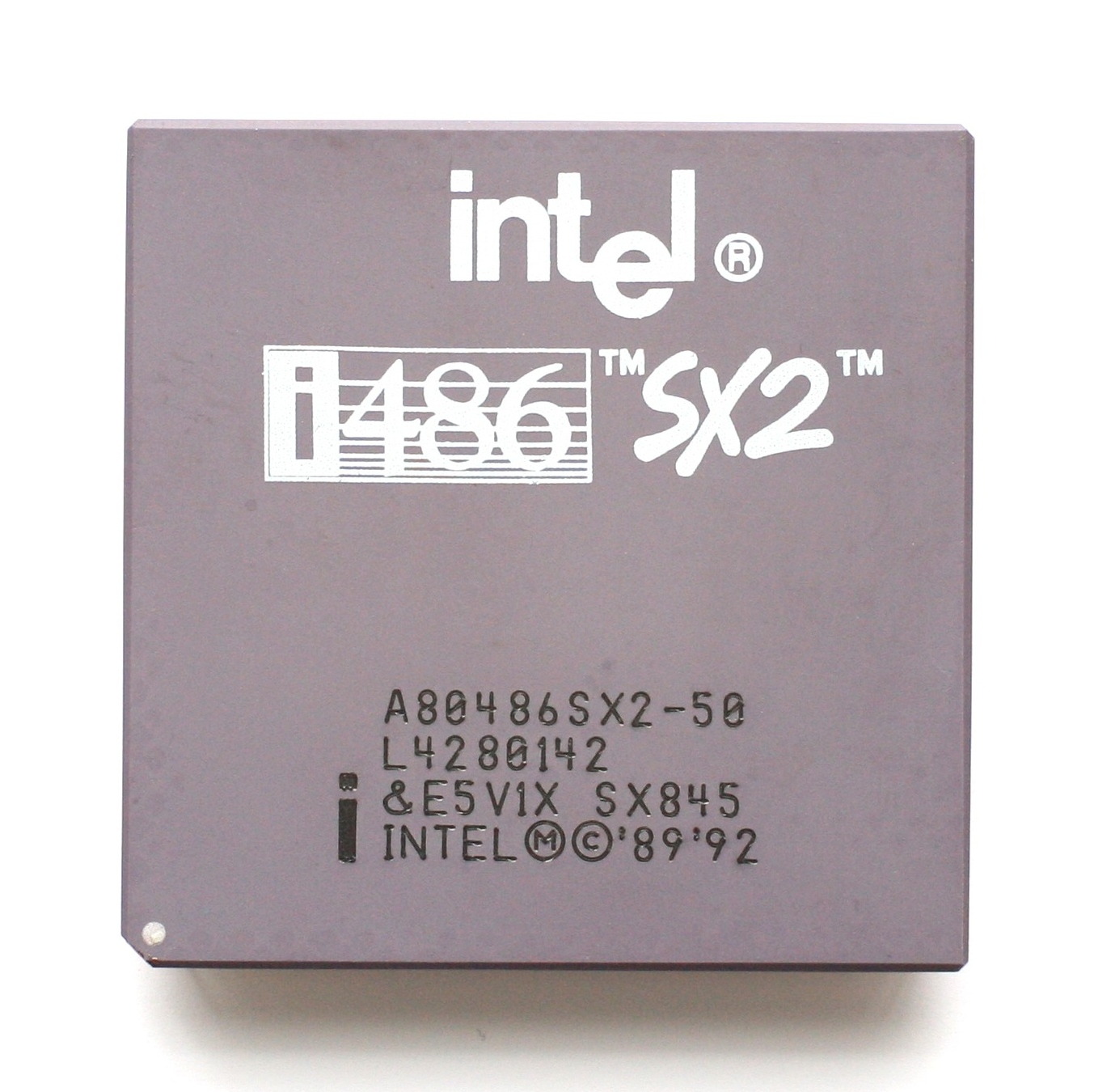Intel 80486
- PGA (socket 1, 2, 3)
- 196 -pin PQFP
- SX
- DX
- DX2
- DX4
- SX2
80486 describes the architecture of an x86 CPU that was originally developed by Intel under the name i486 as an evolution of its predecessor 80386. Later, the 486 - like the 80486 is often called - copied by many manufacturers: AMD Am486 was a copy of i486, while Cyrix (and IBM, TI and ST) and UMC -selling in-house developments.
Main architect was John Crawford.
Innovations
The main difference with respect to its predecessor was the 32- bit integer RISC core, which is frequently used instructions implemented as RISC and thus waived for those commands to a micro- code. This allowed the CPU to execute a number of commands in one cycle, but the integration of a first-level cache made ( L1 cache ) is required in the CPU.
In addition, fast burst modes came to the acceleration of external accesses and some serious improvements in its internal processing. 80486 reached on average, more than twice the execution speed of 80386 at the same clock frequency, wherein an adaptation of the program code is not required.
Most 80486 models also have a built-in math coprocessor, the floating-point calculations considerably accelerated (without coprocessor models can be identified by the suffix SX). As a math coprocessor was not yet self- evident at the time, he was initially supported by only a few applications.
Variants
The 80486 processor is offered in several versions with different performance. The initial model was the SX series, which decreed as opposed to DX - series does not provide integrated floating point unit ( FPU). Both families were also in a version with double ( SX2 and DX2 ) and the DX even with triple internal clock speed ( DX4 ). A i486DX2/66 processor running at 66 MHz internally though, the front -side bus, however, was only clocked at 33 MHz. This meant that a i486DX/50 with 50 MHz bus clock, in many cases was faster than a i486DX2/66, although the CPU was clocked slower.
The i486DX4 had a triple multiplier, reaching 33 MHz bus clock 100 MHz CPU clock. He was also offered in a version for 25 MHz bus clock (75 MHz CPU clock ). The i486DX4 could only be used on particularly suitable motherboards, since the CPU voltage instead of the usual 5 volts was only 3.3 volts.
Models
Intel itself offered the processors under the name Intel i486 with various appended letter sequences. The AMD Am486 was largely a copy of the Intel i486 and fully compatible with this.
The Cyrix Cx486 was developed in-house, which was largely compatible with the Intel i486. This processor has been manufactured by IBM, SGS -Thomson, and Texas Instruments is under license.
The UMC Green CPU was developed by United Microelectronics Corporation, manufactured and sold. It was compatible with the Intel, but largely unknown.




.jpg)





